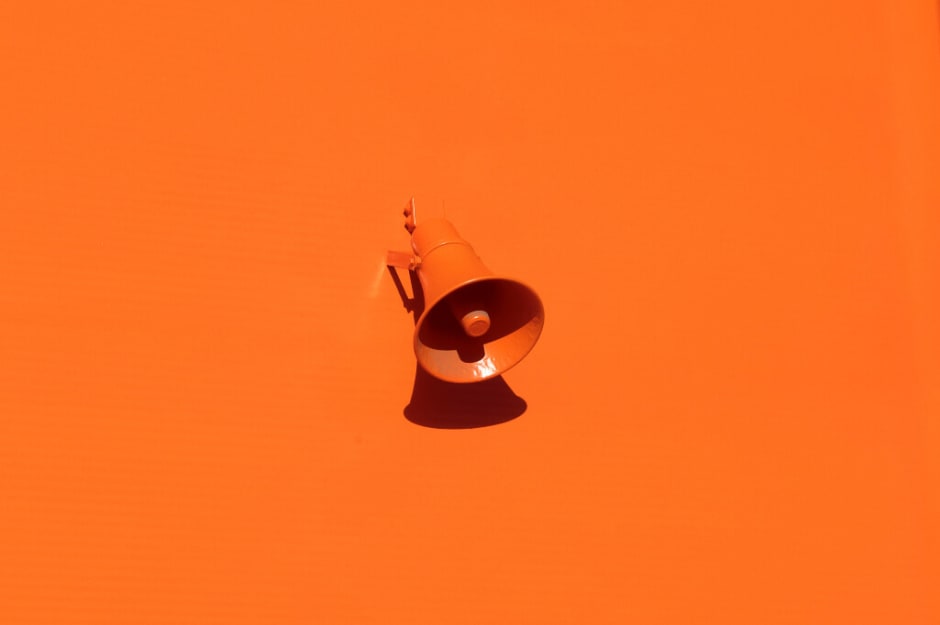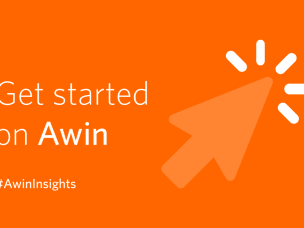How to craft CTAs that make people click like crazy
Written by Samantha Sherer on 10 minute read
The all-important click. It’s what you’re looking for with almost any form of digital marketing.

As a publisher or an advertiser, the click to purchase, subscribe or submit contact information eventually means money in your pocket, if you craft it right.
The all-important click. It’s what you’re looking for with almost any form of digital marketing. As a publisher or an advertiser, the click to purchase, subscribe or submit contact information eventually means money in your pocket, if you craft it right.
Your ability to have your reader, follower or subscriber reach the point where they make that vital click is heavily dependant on your CTA.
What is a CTA (Call to Action)?
A CTA or Call To Action is you saying to your potential customer ‘this is what you should do next’ and you should’ve convinced them that it’s a good idea to do so along the way. With any luck (and by luck we mean a carefully crafted and considered CTA) they will go on to complete that action, either easing them further into your sales loop or potentially completing that loop with a purchase.
A CTA can take many forms. In some cases, it’s simply words in a text that encourages the next step. Sometimes it’s an image or a video. Quite often it’s a clickable button.
Why do I need a call to action?
Without an obvious call to action for your potential customer, your creative copy or thumb-stopping content is missing out on its full potential, and you could be missing out on valuable conversions.
People can be lazy creatures, we like to achieve things as easily as possible. A strong and easy-to-follow CTA helps people complete the next step without really having to think about it. This does not mean that the choice to follow through on a CTA isn’t considered by your user, but simply that you have been so compelling in your content leading up to it, and your CTA is so clear and prominent, that clicking through is a ‘no-brainer’ to them.
How do I create a strong call to action?
As with any good form of marketing, the key is really to understand your customer's wants and needs. Obviously all audiences differ and taking in the age, sex, background, demographics, pain points and drivers are vital steps in finding the best calls to action to increase your click-through rate. Some strong keyword research around your topic, product or service should help you grasp what they are looking for.
Speak to your potential customers in a way they understand and provide the value that they are looking for in your content. That way when they reach the CTA they’re primed, they’ve been on the journey with you and they feel understood.
Depending on what platform you’re using, your call to action can take different forms. There have been many studies around human psychology and online behavior when it comes to the most clickable CTAs. Of course, they all have varying results. There is no one singular tried and true answer as to what works best (though there are some strong suggestions) but the one constant is that you must test repeatedly.
Persuasive written CTAs

If you’ve ever attended a networking event you’ll know how off putting it can be to have someone launch into a sales pitch straight after you ask ‘So, what do you do?’ If something is unknown to us, we often like to be eased into it.
The same works for persuasive copy, culminating in a great CTA. If you start off with ‘Hello. You should buy this!’ people are far less inclined to click through as they haven’t been eased into it and they don’t feel they are willingly making the decision themselves.
It’s often a good idea to write out all the reasons you think the product or service you’re suggesting people purchase is great. Consider the all-important pain points and how what you’re offering them can help solve these problems or concerns.
You should be creating a seamless connection between your content and the final call to action. It shouldn’t shock or surprise the potential customer, but instead, be built toward. With the content flowing logically, the CTA is a simple to follow next step.
Tips for the best call to action buttons
An eye-catching button is a great way to make your CTA really clear for your reader or viewer. Many psychological studies have been done to work out what makes people click like crazy. Of course, as previously mentioned, there is no ‘one-size-fits-all’ answer to make people respond to a CTA. If there was, everyone would be doing it. But the following tips have been observed from large groups in studies and experiments.
-
Color pop
Your button should be a color, not black or white. Take a look at your website’s existing color scheme and site elements, those are often the best colors to incorporate with your buttons.
Alternatively, there are some very simple tests you can run yourself if you’d like something that really stands out. Create the button in four different color options and place them together. Glance quickly at your screen - whichever your eye is drawn to first may be the best option for you. There is also a study into how specific colors align with certain moods or feelings when it comes to purchasing; this could be something to consider.
White has also been proven to be one of the best colors for the button font.
-
Be aware of your surroundings
In many cases, the surrounding background color has made a difference in click through rate (CTR). Your button should pop from the screen. White has shown to be the best color for this, but consider other page elements and colors as to what will stand out the best, without being offensive to the eye.
CTR is also often higher on CTA buttons that have lots of white space (or negative space.) This does not mean the space surrounding your button must be white, or even that it needs to be completely empty - just that it often works best if the button has very little around it that detracts from the CTA.
-
K.I.S.S
It’s often a good idea to apply the K.I.S.S principle (Keep It Simple, Stupid) when crafting a CTA.Make your buttons look like clickable buttons. It seems like an obvious statement, but lots of marketers unnecessarily overcomplicate this. We’d also suggest avoiding complicated graphics, design frills, and movement. Some simple graphics may work for your audience, but flashy, moving parts can often distract people.
-
Size counts
Your button should be proportionate to other elements on the page. Too large and a button can be off putting, making people ignore your CTA. Too small and this vital element could be missed or deemed to be unimportant. This goes for text size too; too large or bold has shown to make customers anxious.
Also, it is vital that you create your page for mobile. Over 51% of people use mobile devices only to view online content, and what looks great on a computer screen may not translate to mobile. Make sure you test how buttons appear on both to ensure people are compelled to click through.
-
Choosing is hard
Don’t give any more than two choices. Options overwhelm people who are looking for answers. As mentioned before, people can be lazy. Guide them to the decision you want them to make. If you are giving more than one choice, make one option VERY obviously the priority.
-
‘Me’ and ‘My’ not ‘You’ and ‘Your’
Imagine you are the potential customer. Always stick to the first person with buttons. Phrasing like ‘Get my offer’ has been proven to work better than ‘Get your offer’ as the customer feels more active in the process. Also, avoid ‘we’ altogether on your button copy.
-
Time for action
Action-based words help potential customers to feel involved and compelled to take the required action such as ‘give’ ‘stop’ ‘start’ and ‘show.’ Using timing-based words also increase this sense of urgency, such as ‘now.’
-
Be valuable
Suggesting some form of value in your button copy can help people to click through on your CTA button. ‘Free’ is a great word, but may not always be relevant to your CTA. Still, use numbers wherever possible.
-
Consistency is key
Try to use similar wording to what you have used throughout the copy leading to your CTA. This helps the customer to feel comfortable with the action.
-
Assume the position
The positioning of your CTA matters. In western culture we read from left to right, top to bottom. Meaning a CTA button works well at the bottom or right-hand side. Other heatmap studies have shown many people skimming for answers read in an ‘F’ shaped pattern, so this could be something to consider with your positioning.
There are mixed reviews for placing a CTA above the fold (within the first section of a webpage, before you begin scrolling). Though this works for some web pages, it is very dependant on the platform, the customer and the product at hand.
-
Be specific
Be very specific about the next action you want the customer to take, or what will happen if they click your CTA button. Keep your words and syllables within those words to a minimum to avoid confusion. No more than five words is best.
-
Stand out from the crowd
Having more than one CTA on a page can be distracting to a customer. However, if this is necessary, make the most valuable one stand out. Keep the others consistent and change it up to make the main CTA the most obvious action.

-
Don’t be negative
Some people choose to use CTAs telling people what NOT to do. This is a risky approach and doesn’t work for most audiences. It’s more effective to ensure your CTA has a positive connotation.
-
Test. Test. Test again. Re-test
As mentioned, there is no one-size-fits-all option here. Test what works for your audience. Even the tiniest tweaks in a CTA can make a huge increase (or decrease) in clicks.
CTAs on social media
Social media platforms have added simple ways to create CTA’s. On YouTube you can create overlays in your videos that click-through to your website or affiliate marketing links.
Facebook and Instagram now have a range of CTA’s you can place on your ads and business pages to help simplify the process for your consumer. Unfortunately, you cannot customize these yet and must choose from their range of CTAs.
What is the best CTA for me?
We wish we could give you the answer, but you’ll have to discover this yourself. Test your options repeatedly and record your results. Without testing, you’re just guessing. And guessing could mean missing out on a great amount of clicking potential.



